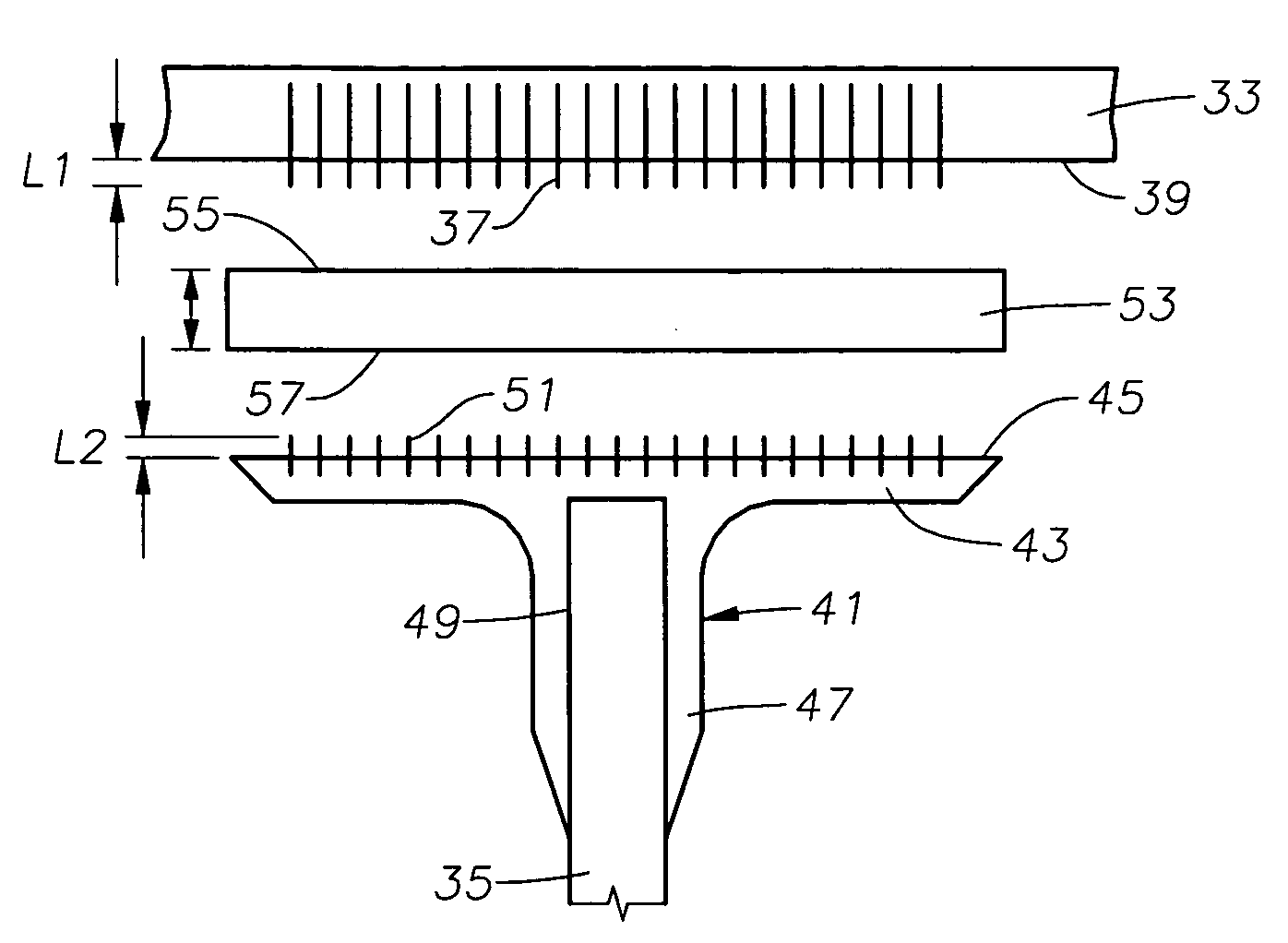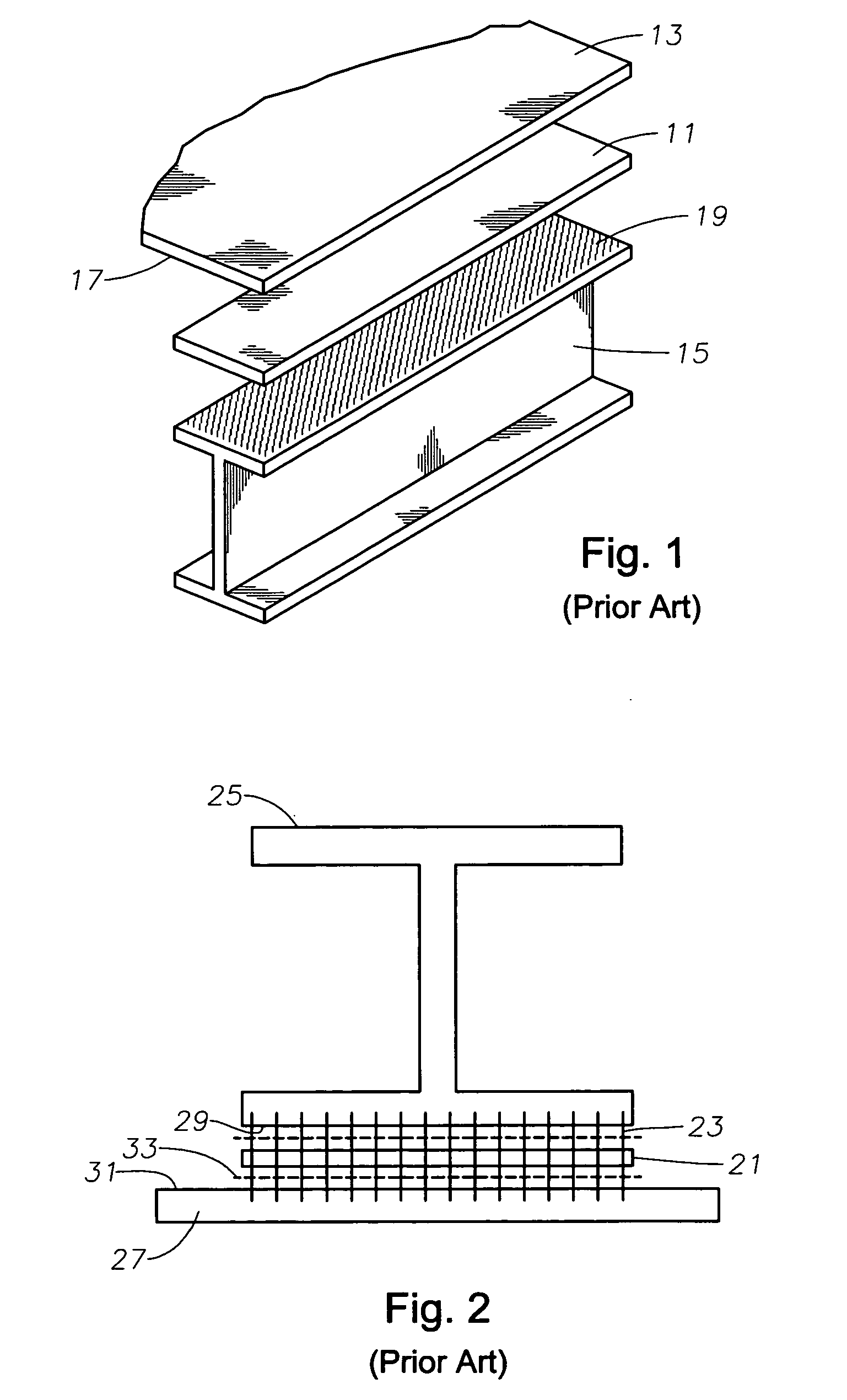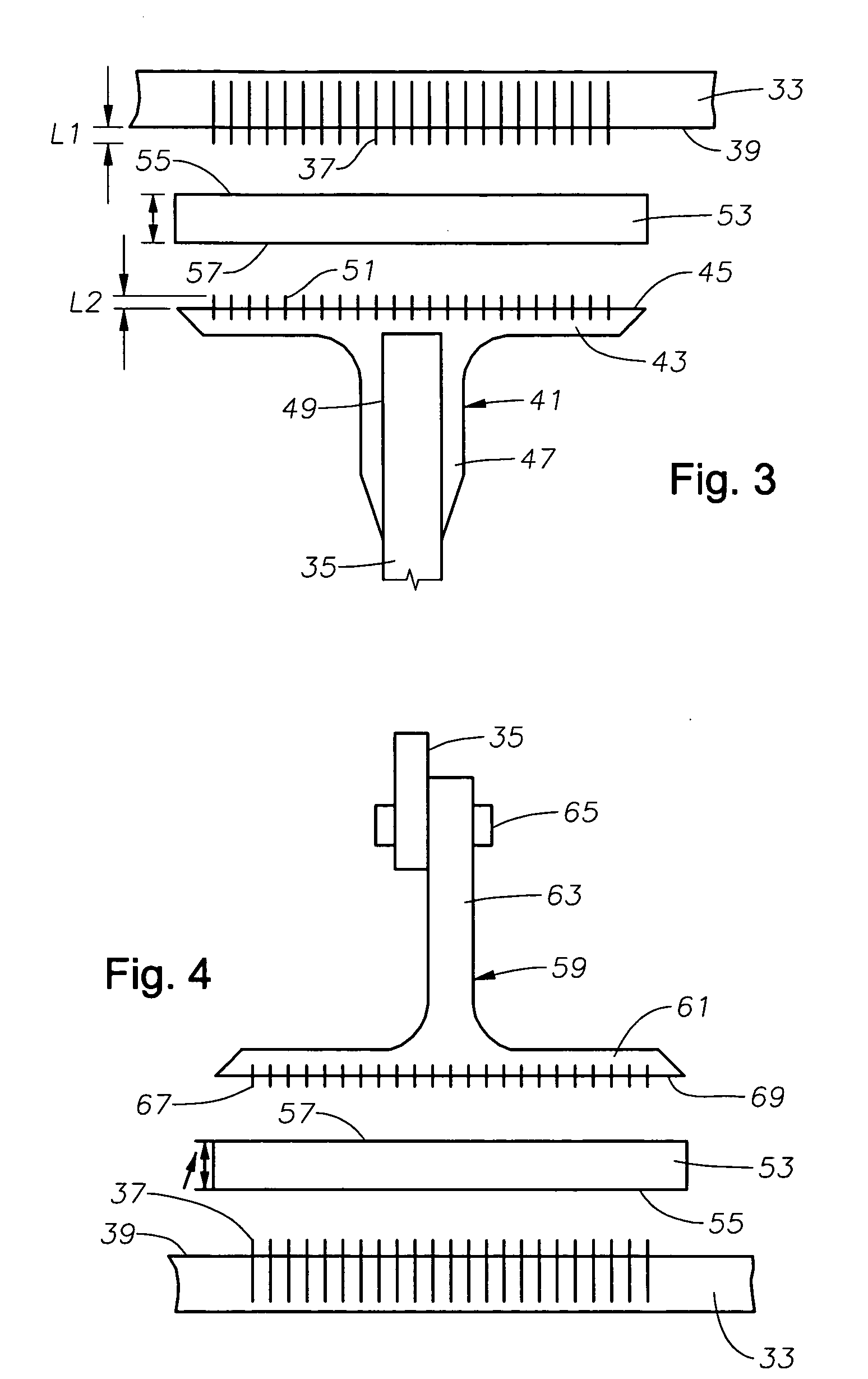Z-pin closeout joint and method of assembly
a technology of closeout joints and components, applied in the direction of weaving, transportation and packaging, layered products, etc., can solve the problems of reducing the production efficiency of layered products, requiring expensive and time-consuming drilling and fastening operations, and weakening the structure, so as to achieve a larger dimensional tolerance and strong joint
- Summary
- Abstract
- Description
- Claims
- Application Information
AI Technical Summary
Benefits of technology
Problems solved by technology
Method used
Image
Examples
Embodiment Construction
[0017]FIGS. 3 and 4 illustrate preferred embodiments of assemblies using an adhesive-infused, three-dimensional (3-D), woven textile preform used for assembling parts into structural joints. The preferred adhesive is FM® 300, also available from Cytec Industries, Inc., but other adhesives will work, providing the adhesive can be infused in a way that properly “wets out,” or saturates, the fiber bundles in the preform.
[0018] Various resin systems are sold under the terms “laminating resins” and “adhesives,” though there is no “bright-line,” industry-standard definition by which to distinguish one from the other. The term “adhesive,” as used herein, is meant as a resin system that has a lower modulus of elasticity and / or a higher strain-to-failure than the resin forming the matrix of the parts to be adhered. The combination of these characteristics is described as higher toughness, and adhesives have a higher toughness than laminating resins, which tend to be more brittle and have lo...
PUM
| Property | Measurement | Unit |
|---|---|---|
| tensile strength | aaaaa | aaaaa |
| tensile strength | aaaaa | aaaaa |
| tensile strength | aaaaa | aaaaa |
Abstract
Description
Claims
Application Information
 Login to View More
Login to View More - R&D
- Intellectual Property
- Life Sciences
- Materials
- Tech Scout
- Unparalleled Data Quality
- Higher Quality Content
- 60% Fewer Hallucinations
Browse by: Latest US Patents, China's latest patents, Technical Efficacy Thesaurus, Application Domain, Technology Topic, Popular Technical Reports.
© 2025 PatSnap. All rights reserved.Legal|Privacy policy|Modern Slavery Act Transparency Statement|Sitemap|About US| Contact US: help@patsnap.com



